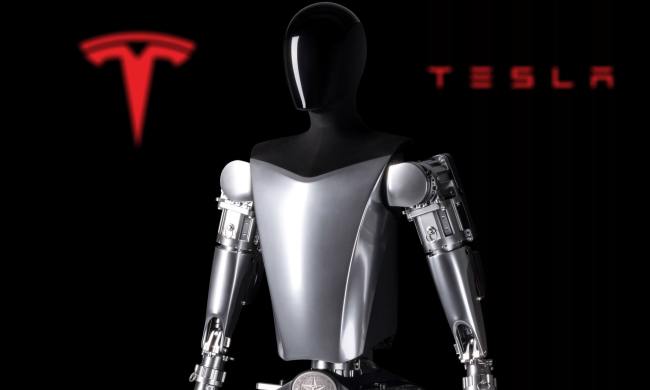It’s been a big year for Qualcomm. Alongside its massive launch into laptop chips through the Snapdragon X Elite series, Qualcomm is now entering the automotive space. The company has announced the new Qualcomm Snapdragon Cockpit Elite and Snapdragon Ride Elite platforms at its annual Snapdragon Summit, which it flew me out to attend.
The two platforms are designed for different purposes, and can be used togetheror separately. The Snapdragon Cockpit Elite is built for in-vehicle infotainment systems and services, while the Snapdragon Ride Elite is built to power autonomous vehicle systems, including all the cameras and sensors that go into those systems.
At the heart of both platforms is the Qualcomm Oryon CPU, which is the same CPU that’s built into Snapdragon-powered smartphones. The result? Vehicles with software running on the Snapdragon Cockpit Elite could theoretically run as quick as your phone — that would be a huge improvement for most vehicles. That’s more important than ever as carmakers start to move toward building software-defined vehicles, or SDVs, in an attempt to be more like Tesla, Rivian, and Lucid.
Software support is important here. In the smartphone space, most Snapdragon chips run Android. In the PC space, they run Windows. But in the automotive world, there are dozens of in-car operating systems, each a little different. Qualcomm says that the platform will support all of these operating systems, though we’ll have to wait and see if it results in a performance hit.
 Qualcomm
QualcommIt’ll support future vehicles with more displays too. Qualcomm says that the Snapdragon Cockpit Elite can drive up to 16 displays with a 4K resolution, which is pretty huge.
AI support is important here too, especially when it comes to the Snapdragon Ride Elite, which is designed to process self-driving tech. Both platforms are designed with a dedicated neural processing unit, with the Snapdragon Ride Elite built specifically for low-latency and highly accurate processing. Low latency is important — the platforms support over 40 multimodal sensors, which includes up to 20 cameras to ensure 360-degree coverage, plus in-cabin monitoring.
And the platforms are designed to do all of this efficiently. That’s important too — the less power being used for processing, the more that can go into ensuring a decent range.
Car software is notoriously slow, often taking seconds to respond to touch and load menus. That’s not only annoying — it’s dangerous, representing more time that you spend looking at a screen when you should be looking at the road. As we head into a world of more and more autonomous tech, better processing is increasingly important.
Qualcomm says Snapdragon Cockpit Elite and Snapdragon Ride Elite will be “available for sampling” in 2025. That doesn’t mean we’ll see cars with the platforms in 2025 — it means automakers will be able to get the chips to start testing with. It could be some time before we can actually buy a car with one of these platforms, though, hopefully, they’ll be available sooner rather than later.
EV bidirectional charging: what it is and how to get it

One of the biggest advantages of electric vehicles is not only the fact that you can charge at home but that you can use your EV to power your home in the event of a power outage, or to save money by limiting power usage during peak periods. The ability for an EV to not only receive power but also supply it is called bidirectional charging -- and if you live in an area with frequent power outages or other emergency situations, it can offer serious peace of mind.
Bidirectional charging is likely to become increasingly common over the next few years. If you're an EV owner with the ability to charge at home, you'll likely want to at least think about whether bidirectional charging could be helpful for you. Here's everything you need to know about the technology, including its advantages and how to ensure you can implement it.
Advantages of bidirectional charging
There are plenty of advantages to allowing an electric vehicle to not only receive power but to supply it as well.
Read more
Tesla reveals price range for Optimus Gen2, its ‘robot without wheels’

“The future should look like the future”, CEO Elon Musk said at the Tesla "We Robot" special event held in Burbank, California, earlier this week. Sure enough, Tesla’s much-anticipated autonomous robotaxi, the Cybercab, and its large-van counterpart, the Cybervan, seemed straight out of celebrated sci-fi movies. But as the name of the event hinted at, a vision of the future would not be complete without robots: Several of the Optimus Gen 2, Tesla’s latest version of humanoid-like robot, were found serving drinks, holding conversations with guests, and even dancing at the event.Tesla has recently pitched the Optimus as a potential replacement for factory workers in China and elsewhere. Musk previously said he expects the Optimus to start working at Tesla factories in 2025 and to be available to other firms in 2026.
Yet, at the event, the Tesla boss revealed his expanded vision of a household robot that can do “everything you want: Babysit your kid, walk your dog, mow your lawn, get the groceries, just be your friend, serve drinks”.He also gave a closer estimate of the robot’s price tag: Once produced "at scale," Optimus should cost somewhere between $20,000 and $30,000. Musk had previously said the robot’s price would be about half that of a car.
Staying true to his sci-fi vision, the Tesla CEO referred to Optimus as a cross between R2D2 and C-3PO, the famous droids from the Star Wars film series.
Ever since the first generation of the Optimus was revealed in 2022, Tesla has emphasized the continuity between its cars and the robot. “Everything that we’ve developed for our cars -- the battery power’s electronics, the advanced motor’s gearboxes, the software, the AI inference computer -- it all actually applies to a humanoid robot,” Musk said at the event. “A robot with arms and legs, instead of a robot with wheels.”
Tesla would not be the first to offer a domestic robot on the market. Hyundai-owned Boston Dynamics has already commercialized a home service-type robot called Spot with a hefty price tag of $74,500. BMW and Open AI are backing robots made by Figure, a California-based company. Meanwhile, Nvidia is developing Project GR00T to also deliver humanoid robots.Earlier this year, Goldman Sachs forecast that the annual global market for humanoid robots could reach $38 billion by 2035, with robot shipments of 1.4 million units both for industrial and consumer applications. It also said that robots could become more affordable as their manufacturing cost has been decreasing more than expected -- leading to faster commercialization.
Read more
GM launches PowerBank, a battery that could rival Tesla’s PowerWall

Competition to provide the best energy savings to EV owners is heating up between auto makers.General Motor’s unit GM Energy has just released PowerBank, a stationary energy storage battery pack that gives electric vehicles (EV) owners the ability to store and transfer energy from the electric grid, and allows integration with home solar power equipment.The PowerBank, which comes in 10.6kWh and 17.7kWh battery capacity variants, can power up a home when there is an outage or help offset higher electricity rates during peak demand, GM said. In addition, customers can also use PowerBank to store and use solar energy, supplement the charging of EVs and provide power to a home without an EV being present.GM says that combining two of its 17.7kWh PowerBanks can provide enough energy to power the average American home for up to 20 hours.The PowerBank can be bought as part of two bundles: the GM Energy Storage bundle at $10,999, or the GM Energy Home System bundle at $12,700. The latter includes a bi-directional EV charger that can provide up to 19.2kWh of power. By comparison, Tesla’s energy storage system, PowerWall 3, can store 13.5kWh of energy and has a price tag of $9,300.According to GM Vice President Wade Sheffer, one key advantage of the PowerBank it its “modularity,” which allows for easy integration with existing technology.GM announced in August that it would provide vehicle-to-home (V2H) technology on all its model year 2026 models. It will now also offer vehicle-to-grid (V2G) technology, which can provide additional energy and financial savings.
Energy savings coming from the integration of electric vehicles, solar-powered homes, and energy grids are increasingly at the center of EV manufacturers' offerings.
Nissan, BMW, Ford, and Honda have grouped together to offer the ChargeScape V2G software, which connects EVs to utilities and the power grid. EV owners can receive financial incentives to pause charging during peak demand or sell energy back to the grid.While Tesla has so far backed off from embracing V2G technology, CEO Elon Musk has hinted that V2G tech could be introduced for Tesla vehicles in 2025.
Read more




















 English (US) ·
English (US) ·